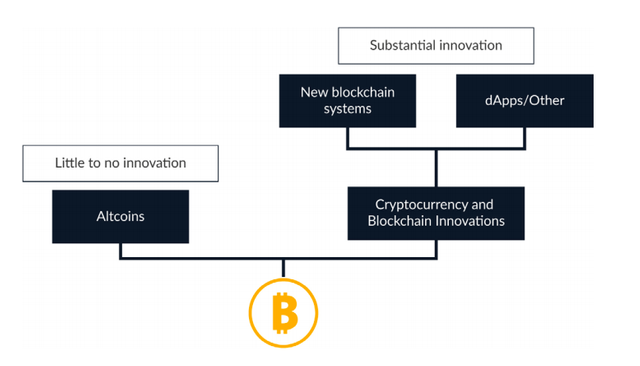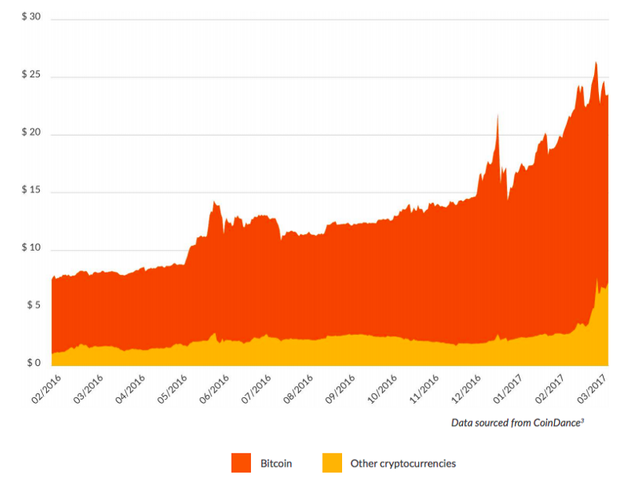Cryptocurrency Report 2017
Cambridge Centre for Alternative Finance has presented its first cryptocurrency benchmarking study, gathering survey data from 150 crypto companies and individuals from 38 countries.
The study is holistic in its approach and provides us with an extremely comprehensive analysis of global cryptocurrency industry and its key components — exchanges, wallets, alternative payment systems and mining sector.
Here are some findings from the report:
The total cryptocurrency market capitalisaton has increased more than 3x since early 2016, reaching nearly $25 billion in March 2017.
The authors of the research pay attention to the fact, that the majority of cryptocurrencies are largely clones of bitcoin or other cryptocurrencies and simply feature different parameter values (e.g., diferent block tme, currency supply, and issuance scheme). These cryptocurrencies show little to no innovation and are often referred to as ‘altcoins’. Examples include Dogecoin and Ethereum Classic.
In contrast, a number of cryptocurrencies have emerged that, while borrowing some concepts from Bitcoin, provide novel and innovative features that offer substantive differences. These can include the introduction of new consensus mechanisms (e.g., proof-of-stake) as well as decentralised computing platforms with ‘smart contract’ capabilities that provide substantially different functionality and enable non monetary use cases. These ‘cryptocurrency and blockchain innovations’ can be grouped into two categories: new (public) blockchain systems that feature their own blockchain (e.g., Ethereum, Peercoin, Zcash), and dApps/Other that exist on additional layers built on top of existing blockchain systems (e.g., Counterparty, Augur).
Interesting facts on cryptocurrency market in 2017:
👉 The current number of unique active users of cryptocurrency wallets is estimated to be between 2.9 million and 5.8 million.
👉 The lines between the different cryptocurrency industry sectors are increasingly blurred: 31% of cryptocurrency companies surveyed are operating across two cryptocurrency industry sectors or more, giving rise to an increasing number of universal cryptocurrency companies.
👉 At least 1,876 people are working full-time in the cryptocurrency industry, and the actual total figure is likely well above two thousand when large mining organizations and other organizations that did not provide headcount figures are added.
👉 Average security headcount and costs for payment companies and exchanges as a percentage of total headcount/operating expenses are similar, but significantly higher for wallets.
👉 The exchanges sector has the highest number of operating entities and employs more people than any other industry sector covered in this study; a significant geographical dispersion of exchanges is observed.
👉 52% of small exchanges hold a formal government license compared to only 35% of large exchanges.
👉 On average, security headcount corresponds to 13% of total employees and 17% of budget is spent on security.


Hi! I am a robot. I just upvoted you! I found similar content that readers might be interested in:
https://www.slideshare.net/ValiantWagon/2017-globalcryptocurrencybenchmarkingstudy